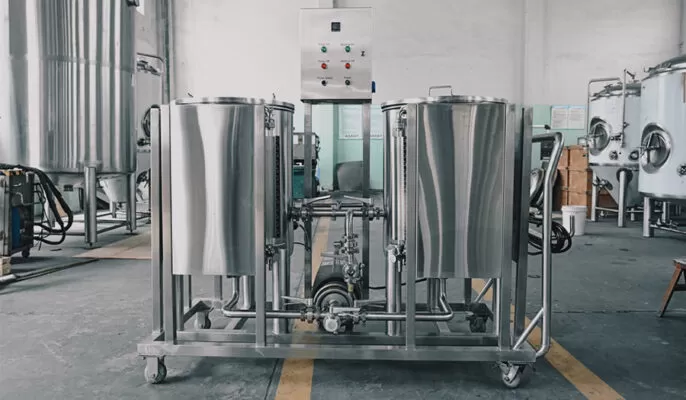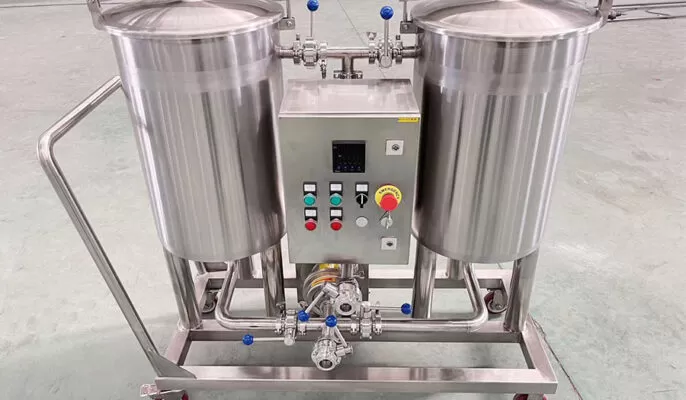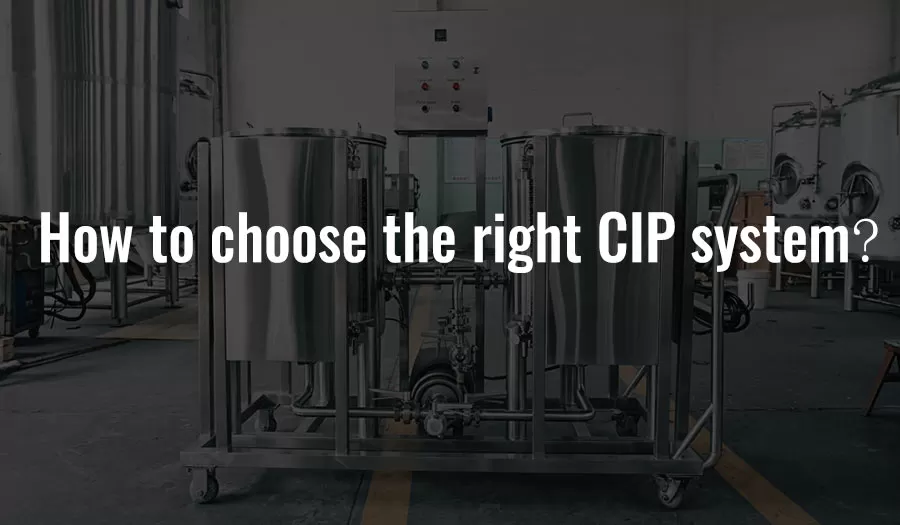Choosing the right type of CIP system for your facility can often seem like a daunting task. The options available are dizzying, and it’s important to find one that suits your needs. This article will provide guidance to help you make the best decision for your facility. CIP systems are installed to reduce cleaning time or labor costs. In recent years, CIP systems have been used in conveyors, filling machines and beer equipment.
What is a CIP system?
Cleaning in Place (CIP) is when many processes work together to completely clean all or part of a process system without dismantling the system. CIP systems pump cleaning, flushing and disinfecting solutions along the same piping path as the product to remove product fouling from internal surfaces. CIP systems can provide many benefits through more thorough cleaning, lower water and detergent consumption, and minimizing process equipment downtime.

Advantages of CIP systems
- Cut errors: Automated cleaning reduces the possibility of human errors that can render products unsafe.
- Keep employees safe: Reduce chemical exposure by including cleaning solutions within the system.
- More production time: Since less production time is lost in cleaning, more time can be spent on manufacturing products.
- Product Quality: Reliable and repeatable cleaning means sustainable product quality and consistency. Less contamination means fewer product recalls and greater brand confidence.
- Utility savings: Reduce water and energy use with repeatable cycle control.
CIP cleaning process
The CIP process involves preparing and delivering cleaning agents to tanks, machines and piping systems. The rinse cycle is completed by cleaning with selected chemicals, detergent washing, disinfecting and final rounds of rinsing. These processes occur at specific temperatures, with water and other materials flowing through them at a speed fast enough to remove various residues and contaminants. This process must be carried out between production batches to ensure that each new batch does not bear any trace of the previous batch.
How to choose the right CIP system?
When choosing the right CIP system for your facility, you should consider the following factors:
- Size of facility and equipment: The size of the facility and equipment to be cleaned will affect the type of CIP system that should be selected. When choosing the right CIP system, be sure to consider the size and scope of your facility.
- Cleaning Requirements: Cleaning requirements also influence the type of CIP system you choose. Some CIP systems are designed to clean specific types of surfaces or equipment, while other systems are versatile.
- Automation: This is another important factor to consider when choosing the right CIP system. Automated CIP systems are more efficient and must less manual labor, but can be more expensive than manual systems. That’s why it’s important to consider your budget and labor needs when choosing the right system.
- Cost: Automated systems tend to be more expensive than manual systems, so it’s important to consider your budget when choosing the system that best suits your needs. Additionally, it is important to analyze potential maintenance and repair costs when selecting a CIP system.
- Energy Efficiency: When selecting a CIP system, consider the energy efficiency of the system. Automated systems tend to be more energy efficient than manual systems, helping to reduce energy costs in the long run. Also, some CIP systems are designed to reduce water usage, which can also help reduce water costs.
- Durability: Durability is the final factor to consider when choosing the right CIP system. Choosing a proven system will help ensure it lasts for many years, reducing the need for expensive repairs and maintenance.
5 tips for optimizing your CIP system
CIP systems are enclosed and equipment can be cleaned and disinfected without , meaning less downtime and reduced risk of contamination. But, optimizing a CIP system requires attention to detail and regular monitoring.

Here are five tips for optimizing your CIP system:
Check and adjust flow and pressure
One of the key factors in ensuring effective cleaning of a CIP system is maintaining appropriate flow rates and pressures. You may need to adjust these parameters based on changes in your production process or equipment. monitoring and adjusting flow and pressure can help optimize the cleaning performance of your CIP system.
Use the correct cleaning solution
select cleaning solutions used in CIP systems to ensure they are effective in removing contaminants and disinfecting equipment. It is important to choose a solution that is compatible with the equipment and process and to follow the manufacturer’s recommended concentrations and contact times.
Ensure proper drainage and flushing
Draining and flushing are critical steps in the CIP process and help ensure the equipment is completely removed of cleaning solutions and contaminants. Proper drainage and flushing is achieved by using the correct nozzles and positioning them to cover all areas of the equipment.
Regular maintenance and inspection
Regular maintenance and inspection of the CIP system and its components can help prevent failures and ensure optimal performance. This includes checking for leaks, damaged hoses, worn or clogged nozzles, and cleaning or replacing filters and screens.
Keep accurate records and documents
Maintaining accurate records and documentation of CIP system performance and maintenance can help identify problems and trends and ensure compliance with regulatory requirements. This includes recording flow, pressure, cleaning solution concentration and contact time, as well as any maintenance or repairs performed on the system.




